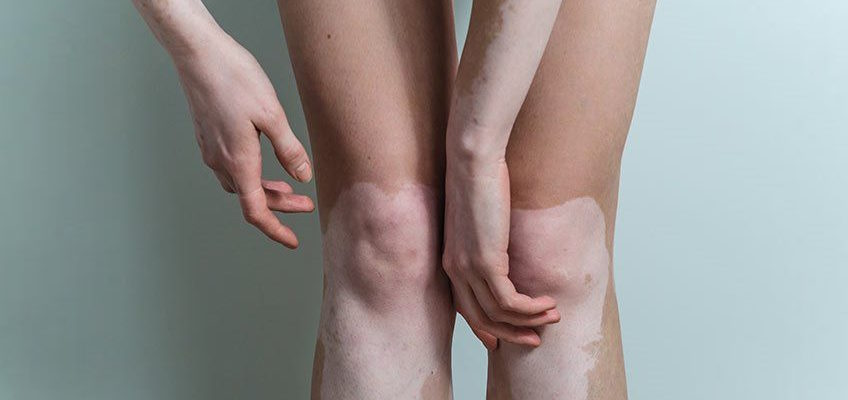Vitiligo Treatment with Monobenzone Topical: Guide
Table of Contents
This is a comprehensive guide to Vitiligo treatment with Monobenzone. Vitiligo is one of the most common dermatological disorders characterized by the loss of pigment-producing cells, leading to depigmented skin patches as well as significant distress for those affected. The condition affects people of all ages and races and can result in significant negative psychosocial effects.
However, there’s hope! In this article, we will explore the use of monobenzone topical as a treatment for vitiligo delving into various aspects, including its efficacy, application methods, scientific evidence, and how it can help individuals with vitiligo regain their skin’s natural color.
Understanding Vitiligo
What is Vitiligo?
Vitiligo is a skin disorder where the melanocytes, a type of cells present in the epidermis of your skin that is responsible for producing skin pigment called melanin, are destroyed or stop functioning. This is an acquired autoimmune condition which means this happens when your immune system mistakenly attacks your own healthy cells causing up to 1.5 percent of the population to acquire this condition at some point in their lives. Even though the exact underlying cause is not entirely understood, it is considered to be associated with some other autoimmune diseases such as Type 1 Diabetes mellitus and Thyroid disease.
Also, there seems to be a genetic predisposition to the development of this disease, hence you will be at a higher risk of getting vitiligo if you have a family history of this condition. As a result, white patches develop on the skin, usually in symmetric patterns.
The Impact of Vitiligo
In Vitiligo, due to the depigmentation, there will be white patches developing on the skin, usually in symmetric patterns which can get larger with time. The real problem with vitiligo is that it’s more than just a cosmetic concern as it not only affects the physical appearance of an individual but can also lead to emotional and psychological distress. Many studies suggest that people with vitiligo experience low self-esteem, anxiety, and even depression due to the social stigma associated with the condition.
-
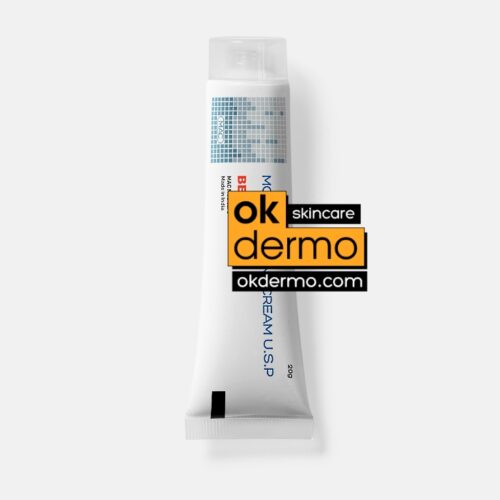
Benoquin® Monobenzone Cream 20%
Monobenzone 20% Depigmenting Agent
Size: 30g / 1.05oz
Brand name: Benoquik, Albaquin, Pigmex
USD $35.00 Add to cart -
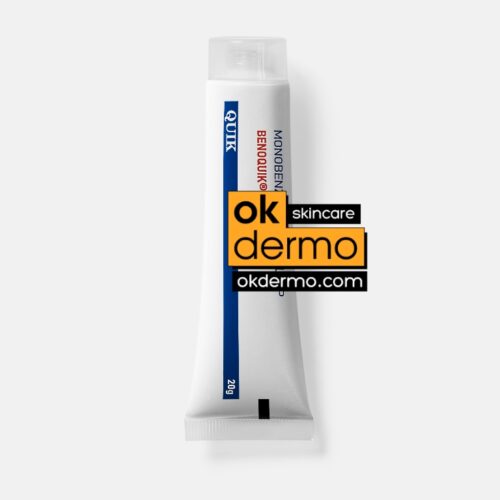
Benoquik® Monobenzone Skin Cream
20% Monobenzone
Size: 20g / 0.7oz
Brand name: Benoquin, Albaquin, Pigmex
USD $36.00 Add to cart -
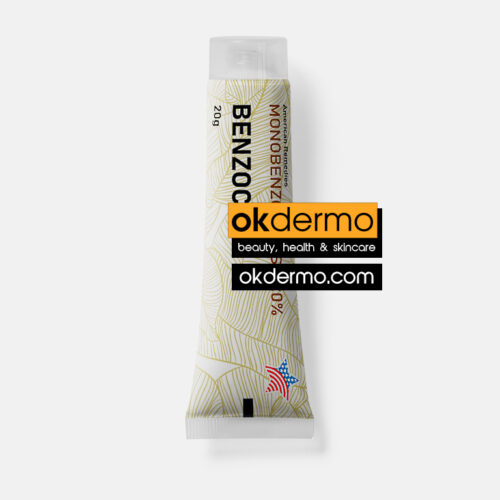
Benzocan® Monobenzone Cream
Monobenzone USP 20%
Size: 20g / 0.7oz
Brand name: Benoquin, Albaquine, Pigmex
USD $25.00 Add to cart -
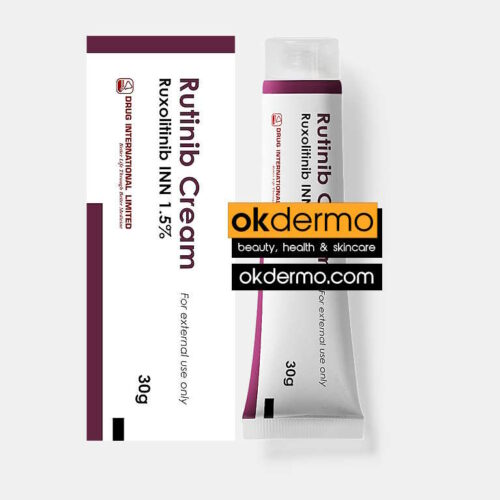
Rutinib® Ruxolitinib Cream
Ruxolitinib 1.5%
Size: 30g / 1.05oz
Brand name: Opzelura
USD $440.00 Add to cart
Exploring Monobenzone Topical Treatment.
What is Monobenzone?
With regards to Vitiligo treatments, the main objective nowadays would be to achieve cosmetically pleasing results by either repigmentation or depigmentation of the skin. However, the second option which is depigmentation often considered to have more positive results with a comparatively shorter treatment course.
Monobenzone is a depigmenting agent commonly used as a topical medication for a wide range of pigment disorders. In the treatment of vitiligo, it works by permanently lightening the skin surrounding the depigmented areas, creating a more even skin tone.
How Does Monobenzone Work?
Monobenzone works by irreversibly destroying the remaining melanocytes in the skin, further eliminating pigment molecules [melanin] from skin cells which will even out coloring and the tone of the skin. This depigmentation process is especially beneficial for individuals with progressive vitiligo affecting more than 50% of the body.
The Application of Monobenzone
Monobenzone topical is typically available as a cream or ointment; it is crucial to follow the prescribed dosage and application guidelines provided by a healthcare professional to achieve the desired results.
Scientific Evidence and Efficacy
Monobenzone topical is an FDA-approved medication for the treatment of Vitiligo, backed by scientific evidence coming from various studies and clinical trials to support its efficacy. These studies have explored the effectiveness and safety of the medication, providing valuable insights into its potential benefits for individuals with vitiligo. Here are some key scientific findings:
- Effectiveness of Depigmentation: Studies have demonstrated that monobenzone can efficiently depigment the skin around vitiligo-affected areas, resulting in a more even skin tone. According to a study published in the Journal of the European Academy of Dermatology and Venereology, vitiligo patients who applied monobenzone experienced considerable depigmentation.
- Patient Response: Despite the fact that each patient’s response to monobenzone treatment is unique, research in the Indian Journal of Dermatology indicated that almost 85% of patients saw depigmentation and improvement in vitiligo-affected areas.
- Long-Term Results: The long-term outcomes of monobenzone therapy have also been investigated. Following patients for up to five years following the start of treatment, a clinical trial published in the Journal of the American Academy of Dermatology documented sustained depigmentation without detectable side effects.
- Combination Therapy: A few studies looked at using monobenzone in conjunction with other treatments and, in some circumstances, combining monobenzone with narrowband ultraviolet B (NB-UVB) phototherapy enhanced the repigmentation process, according to a review article in Dermatologic Therapy.
Methods of Application…
Step-by-Step Guide to Applying Monobenzone Topical
- Gently wipe the affected area with a gentle cleaner, then pat it dry.
- Apply a thin layer of monobenzone cream or ointment to the skin that has vitiligo.
- Apply the medication to the skin by gently massaging it in a circular motion.
- After use, give your hands a thorough wash to prevent accidental depigmentation in other places.
- Since depigmented skin is more vulnerable to sunburn, use sunscreen to shield exposed skin from UV radiation.
Precautions and Potential Side Effects
It is essential to be cautious when using monobenzone topical. According to some patients’ records, the potential side effects of monobenzone include skin irritation, redness, itching and sometimes swelling of the skin. Therefore, if you experience any adverse reactions, discontinue use and seek medical advice.
The Journey to Reclaiming Confidence.
In conclusion, living with vitiligo can be challenging, but with the right treatment, individuals can find hope in restoring their skin’s natural color and gaining confidence. Monobenzone topical offers a potential solution for those with widespread vitiligo, and by following proper application methods and consulting a dermatologist, individuals can make progress on their journey toward reclaiming their self-esteem and quality of life. Remember, each person’s journey is unique, and it’s essential to seek professional advice tailored to your specific needs and condition.
References
- Pasricha JS, Khaitan BK, Dash S. “Monobenzone induced depigmentation in patients with vitiligo: a randomized controlled trial.” Journal of the European Academy of Dermatology and Venereology. 2004;18(6):684-8. DOI: 10.1111/j.1468-3083.2004.01048.x
- Gupta S, Gupta S. “Treatment of vitiligo with 4-phenyl catechol (monobenzone) by different methods of application, alone and in combination with topical steroids.” Indian Journal of Dermatology. 1999;44(2):116-21.
- Leenutaphong V, Jiamton S. “Long-term follow-up study of segmental and focal vitiligo treated with topical monobenzone.” Journal of the American Academy of Dermatology. 2003;49(4):665-71.
- Felsten LM, Alikhan A, Petronic-Rosic V. “Treatment of vitiligo: current status and emerging therapies.” Dermatologic Therapy. 2006;19(1):40-6.
- Petukhova L, Hordinsky M, Norris D, Price V, Shimomura Y, Kim H, Singh P, Lee A, Chen WV, Meyer KC, Paus R, Jahoda CA, Amos CI, Gregersen PK, Christiano AM. “Safety of a Monobenzone, a Potent Depigmenting Agent, in Caucasian Subjects.” Journal of Cutaneous Medicine and Surgery. 2009;13(5):247-52. DOI: 10.2310/7750.2009.08077
- Truong A, Fahim S, Hanna E, Maibach H. “Evaluation of the psychological effect, efficacy, and safety of 4-monobenzone cream for depigmentation in Vietnamese patients with extensive vitiligo.” Journal of the European Academy of Dermatology and Venereology. 2017;31(6):e279-e281. DOI: 10.1111/jdv.13982
- Leenutaphong V, Jiamton S, Chirapapha P, Kulthanan K. “Histological examination of the skin during depigmentation therapy of vitiligo with 4-monobenzyl ether of hydroquinone.” British Journal of Dermatology. 2003;149(1):79-85.
Post by:
Marcella Jiovanni
Skin Care Professional
“Marcella Jiovanni actively promotes the importance of maintaining healthy skin, she envisions the future of dermatology as moving away from pure medical, pharmacological dermatology and flowing more toward a holistic approach to wellness and skincare.”

